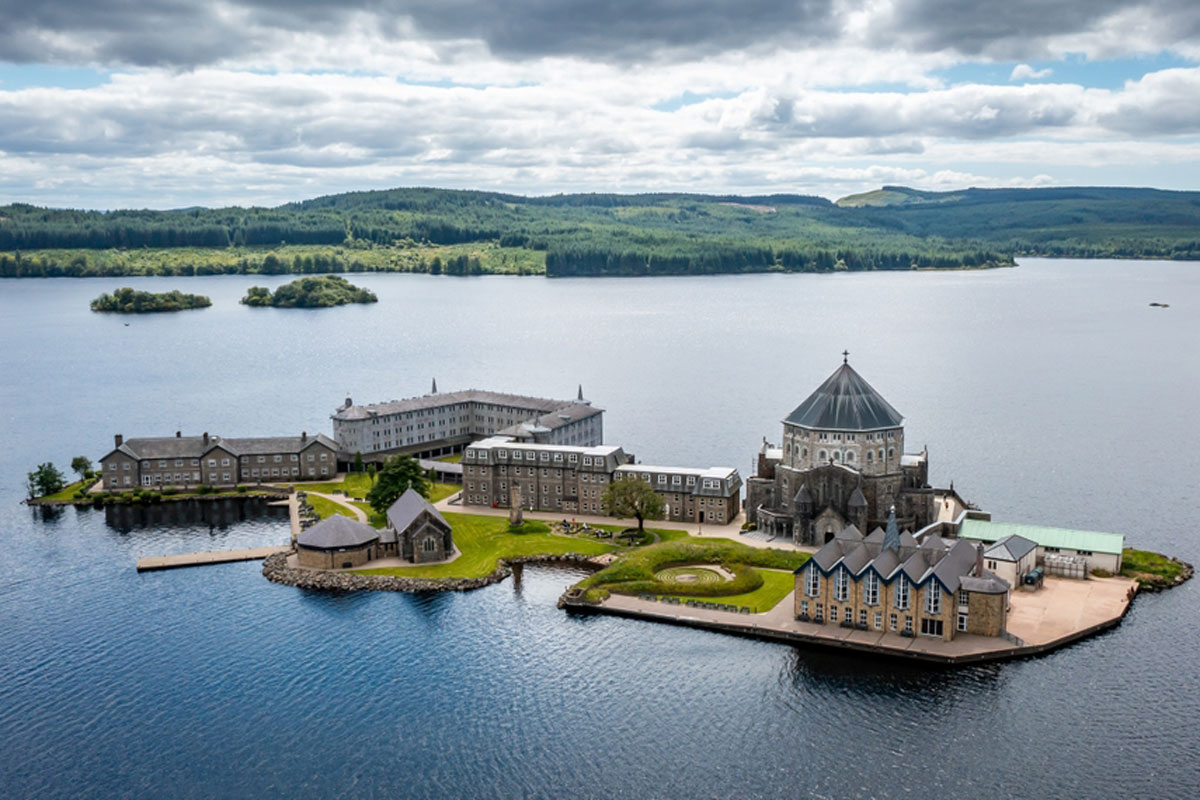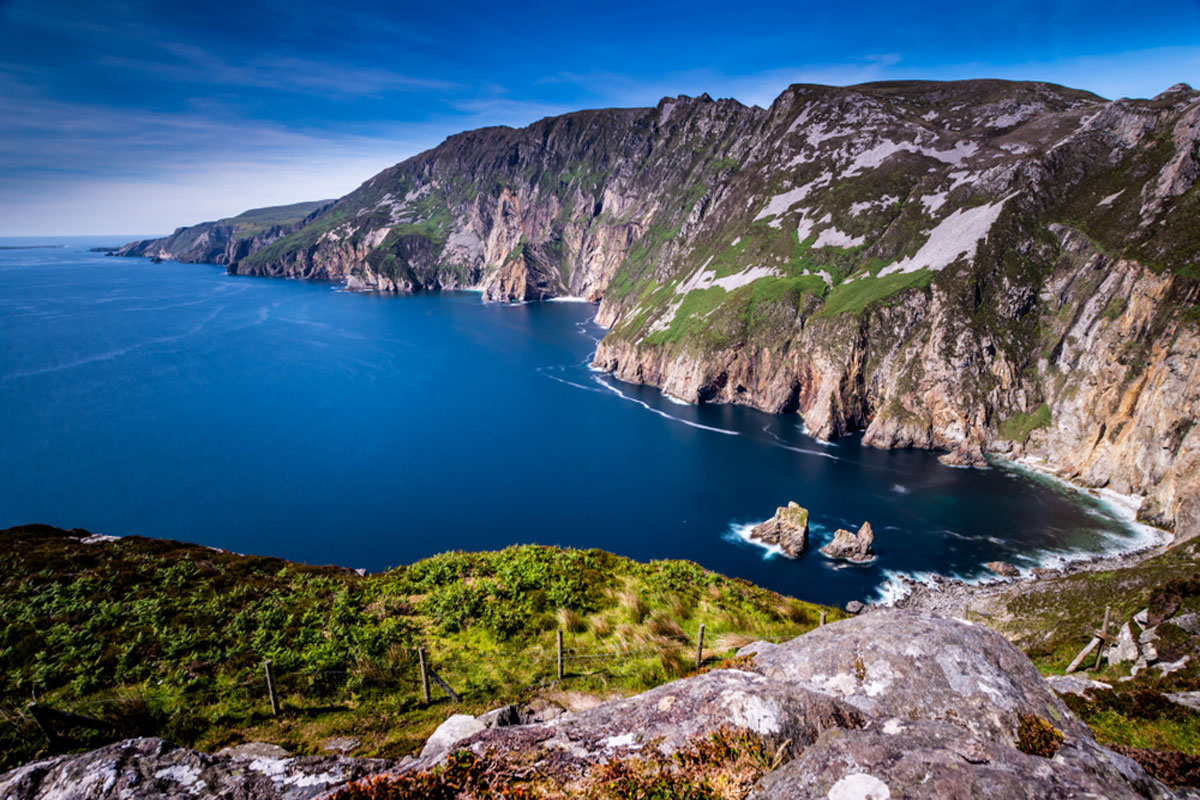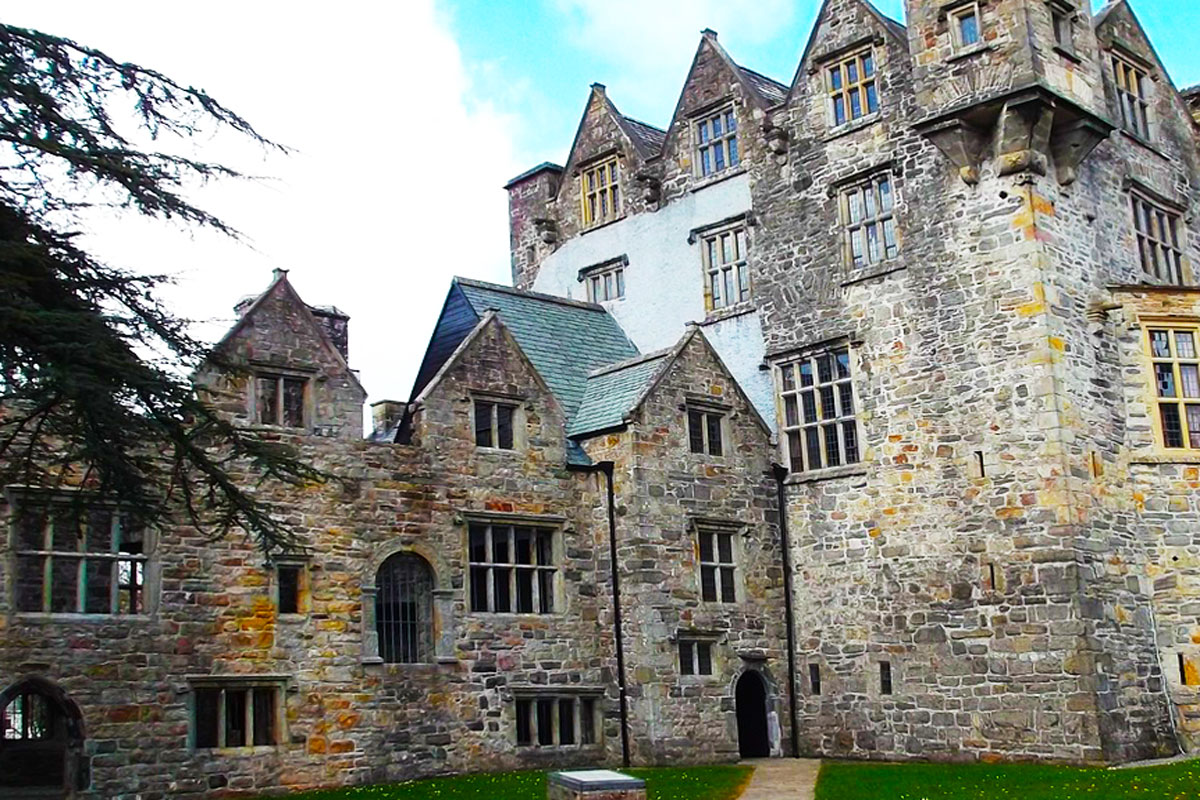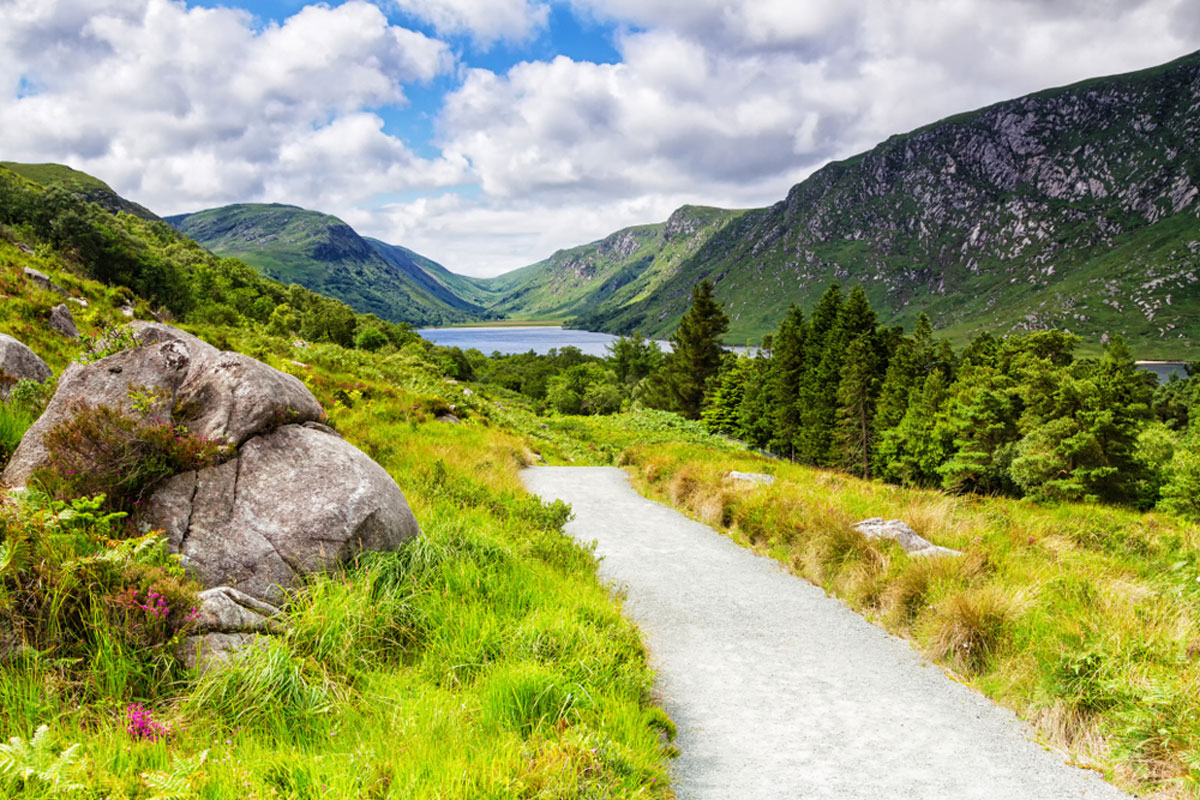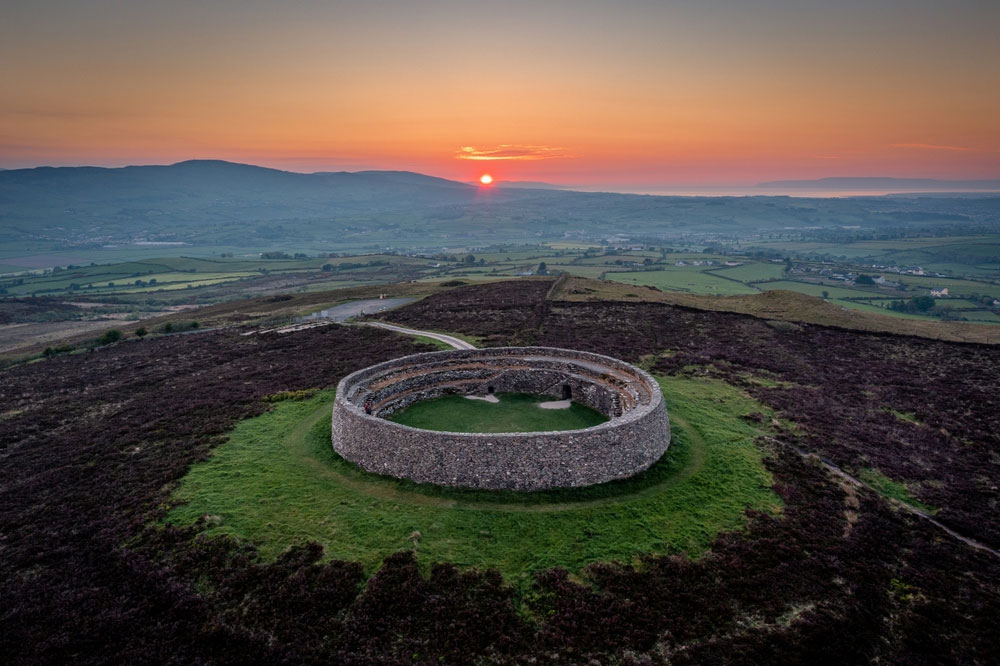Introduction to Lough Derg and the Pilgrim Path
Nestled in the rugged landscapes of County Donegal, Lough Derg is one of Ireland’s most iconic and enduring pilgrimage destinations. Known as St. Patrick’s Purgatory, this sacred site has been a place of spiritual significance for over a millennium. Pilgrims from across Ireland and beyond have traveled to its shores, seeking spiritual renewal, penance, and deep reflection.
At the heart of Lough Derg is a profound spiritual tradition that dates back to the 5th century. Legend has it that St. Patrick himself visited the island, using it as a place to communicate with God and pray for the Irish people. The pilgrim path to Lough Derg offers a physical and spiritual journey, one that has remained largely unchanged in its essence for centuries.
Despite the challenges of its terrain and the austerity of the pilgrimage experience, thousands continue to walk the path each year, following in the footsteps of countless others who have sought peace, forgiveness, and a closer connection to their faith.
The Pilgrim Path itself, which stretches through the scenic wilderness of Donegal, serves as both a metaphor and a means of spiritual cleansing. Along the way, pilgrims encounter moments of introspection, silence, and solitude, while the surrounding beauty of nature offers a serene backdrop for personal reflection. From the ancient tradition of barefoot walking to the prayerful rhythms observed along the route, each step along the Pilgrim Path is laden with meaning and significance.
The Pilgrim Experience – A Journey of Penance and Reflection
The pilgrimage to Lough Derg is unlike any other spiritual journey. It is renowned for its physically demanding and deeply symbolic acts of penance, which test the endurance of both body and soul. At the heart of this experience is the belief that physical hardship can lead to spiritual renewal. This unique form of devotion has attracted pilgrims to Lough Derg for centuries, where they seek forgiveness, healing, and a renewed connection with their faith.
One of the most distinctive features of the Lough Derg pilgrimage is the tradition of fasting and barefoot walking. Pilgrims typically undertake a three-day retreat, during which they observe a strict fast, consuming only plain tea, toast, and oatcakes. This act of self-denial is seen as a way to remove distractions and focus the mind on prayer and reflection. The fast is a powerful symbol of humility and submission, echoing the sacrifices made by those who came before.
As pilgrims approach the island, many remove their shoes, walking the remainder of the journey barefoot. This simple act is both a gesture of humility and an expression of solidarity with the saints and penitents who have walked the same path before them. The bare earth beneath their feet serves as a constant reminder of the connection between body, soul, and nature. The uneven, often sharp terrain adds to the sense of struggle, representing the hardships one must overcome to find spiritual clarity.
Upon reaching the island of Lough Derg, pilgrims begin a series of structured prayer sessions known as “stations.” These stations involve a cycle of prayer, kneeling, and walking around sacred sites on the island, including St. Patrick’s Basilica, ancient crosses, and penitential beds. Each station serves as a step toward spiritual purification, encouraging introspection and a focus on one’s inner journey. The prayers recited during this time are deeply rooted in Ireland’s Catholic tradition, invoking the saints and seeking God’s mercy.
Despite the physical hardships, the atmosphere at Lough Derg is one of peace and communal support. Pilgrims walk side by side, often in silence, but united in their shared purpose. Many find solace in the communal aspect of the pilgrimage, knowing that they are part of a long-standing tradition of faith and devotion.
The Sacred Rituals and Prayers of the Lough Derg Pilgrimage
At the heart of the Lough Derg pilgrimage lies a series of deeply symbolic rituals and prayers, designed to guide pilgrims through a process of spiritual renewal. These traditions, passed down through the centuries, offer a structured path toward reflection, penance, and personal transformation. The rituals observed at Lough Derg are as ancient as they are profound, rooted in Ireland’s rich Christian heritage and designed to cultivate a sense of humility and closeness to God.
One of the core elements of the pilgrimage is the cycle of “stations.” Pilgrims complete a series of stations at different sacred sites around the island, each representing a step in their spiritual journey. The most iconic of these are the “penitential beds,” believed to be the remains of early monastic cells. These stone circles are where pilgrims kneel, pray, and reflect, symbolizing the trials of St. Patrick and the early Christian monks who once sought solitude and communion with God here.
The station prayers are a central part of the pilgrimage. These prayers are a blend of traditional Catholic prayers, including the Our Father, Hail Mary, and Apostles’ Creed, recited repeatedly throughout the day. Pilgrims circle the sacred sites barefoot, reciting these prayers and pausing at specific points to kneel and offer their petitions. This rhythm of walking, kneeling, and praying mirrors the internal process of self-examination and penitence that the pilgrimage is meant to invoke.
Another key ritual is the Vigil, a 24-hour period of prayer and reflection that takes place during the second day of the pilgrimage. Pilgrims are required to remain awake and pray throughout the night, a practice that represents spiritual vigilance and endurance. The Vigil is often described as the most intense part of the pilgrimage, as fatigue sets in and pilgrims are pushed to their physical and spiritual limits. This test of endurance mirrors the trials of the saints and martyrs, reminding pilgrims that true faith often requires sacrifice.
Throughout the pilgrimage, the Sacrament of Reconciliation (Confession) plays a crucial role. Many pilgrims seek to unburden themselves of their sins and renew their relationship with God through this sacred act. Confession is seen as a vital step in the journey toward forgiveness, offering a moment of grace and healing amid the physical and emotional demands of the pilgrimage.
Mass is celebrated daily at the heart of the island, a beautiful stone structure that serves as the focal point of the pilgrimage. With its simple yet sacred interior, this church holds deep spiritual significance for those who attend. For many, participating in Mass here is a profound moment, marking the culmination of their prayers and dedication over the past days. After a period of fasting and reflection, receiving the Eucharist becomes a deeply symbolic act of spiritual nourishment and renewal.
These rituals and prayers, while physically demanding, are designed to create space for deep reflection and a sense of personal transformation. Pilgrims are encouraged to focus on their relationship with God, to seek forgiveness, and to return to their daily lives renewed in faith.
Overcoming the Physical and Emotional Challenges of the Pilgrimage
The Lough Derg pilgrimage is renowned for its intensity, both physically and emotionally. It is a journey that pushes pilgrims to their limits, testing their endurance, resilience, and faith. This part of the pilgrimage is often described as a profound challenge, but also as a deeply rewarding experience that brings a sense of spiritual cleansing and renewal. The harshness of the journey mirrors the inner trials of penance and self-examination, and for many, completing the pilgrimage becomes a transformative achievement.
One of the primary physical challenges of the pilgrimage is the extended fast. Over three days, pilgrims adhere to a strict diet of plain tea or coffee, dry toast, and oatcakes. The fasting element is meant to cultivate humility and sharpen the focus on spiritual matters by removing the distractions and comforts of ordinary life. As hunger sets in, many pilgrims describe feeling a heightened awareness of their purpose, and a deeper connection to their prayers. This practice also fosters empathy, as participants reflect on the suffering and sacrifices of others, drawing strength from their shared experience.
Walking barefoot throughout the pilgrimage is another notable physical challenge. The terrain around Lough Derg is rough, with gravel paths and sharp stones that make walking difficult. Going barefoot is not merely symbolic—it forces pilgrims to confront discomfort and pain head-on, stripping away the usual protections we rely on in daily life. The act of walking barefoot becomes a gesture of humility and vulnerability, an offering of both body and spirit in the pursuit of spiritual growth.
The sleepless Vigil on the second night poses a different kind of challenge. Staying awake for 24 hours of continuous prayer and reflection pushes pilgrims beyond their normal limits of stamina. The exhaustion that accompanies this period of prayer is part of the trial, as it echoes the nights of prayer and endurance undertaken by saints and monks in their quest for closeness to God. The Vigil is a time of introspection, as the mind, no longer distracted by sleep, is forced to grapple with deeper spiritual questions and personal struggles. Pilgrims often describe moments of clarity and insight emerging during this phase of the pilgrimage.
Emotionally, the pilgrimage can be as demanding as it is physically. The austerity and solitude of the island, combined with the focus on penance, often stir deep feelings of regret, sorrow, and longing. Pilgrims may confront personal hardships, unresolved conflicts, or spiritual doubts that arise during the long hours of prayer and reflection. Yet, despite these emotional trials, many pilgrims find unexpected strength in the communal nature of the experience. Walking alongside others who share similar intentions fosters a sense of solidarity and encouragement. Even in silence, there is a palpable connection between pilgrims, as they support one another through the shared struggle.
The experience of confession and reconciliation can be emotionally cathartic for many. Lough Derg provides an opportunity to unburden oneself in the presence of priests, who are available for confession throughout the pilgrimage. For those seeking forgiveness or spiritual guidance, this can be a powerful moment of release, allowing pilgrims to leave behind their burdens and begin anew.
Through these physical and emotional trials, pilgrims emerge transformed. The pilgrimage to Lough Derg, with its focus on simplicity, endurance, and reflection, strips away distractions and reveals the core of one’s spiritual self. While the journey is demanding, the sense of accomplishment, renewal, and inner peace that comes with completing the pilgrimage is profound.
Carrying the Spiritual Journey Beyond Lough Derg
As pilgrims leave the shores of Lough Derg, the physical challenges may be behind them, but the spiritual journey continues. The insights gained during the pilgrimage stay with them long after they have returned to their daily lives. This final stage of the experience is about integrating the lessons learned during the pilgrimage into their ongoing spiritual practice, allowing the profound transformation to influence how they approach life and faith moving forward.
One of the most important takeaways from the Lough Derg pilgrimage is the cultivation of inner strength and resilience. The physical hardships—fasting, walking barefoot, and sleepless vigils—are not merely trials for the sake of suffering. They are reminders of the inner strength we each possess, even when faced with discomfort or exhaustion. Pilgrims often speak of a newfound confidence in their ability to endure challenges, not just on the island but in their everyday lives. The pilgrimage becomes a powerful metaphor for persevering through personal struggles and remaining grounded in faith during difficult times.
Another lasting impact of the pilgrimage is the deep sense of peace and humility it fosters. The rituals, particularly the act of walking barefoot and fasting, encourage simplicity and a detachment from material concerns. Pilgrims return to their lives with a fresh perspective on what truly matters, often finding a new appreciation for life’s simplest moments. This sense of humility and gratitude deepens their spiritual practice and strengthens their connection to God, reminding them that true fulfillment lies not in worldly achievements but in a meaningful relationship with the divine.
The experience of communal prayer and solidarity on Lough Derg also leaves a lasting impression. While the pilgrimage is a deeply personal journey, it is shared with others who are walking the same path. The bonds formed on the island—whether through shared prayers, silent support, or mutual encouragement—reinforce the idea that faith is not a solitary pursuit. Pilgrims often find a renewed sense of belonging within the wider spiritual community, realizing that they are part of a long-standing tradition of seekers who have come to Lough Derg for centuries in search of healing and renewal.
The practice of penance, central to the Lough Derg pilgrimage, leaves pilgrims with a profound sense of spiritual renewal. By facing their sins, seeking reconciliation, and making personal sacrifices, pilgrims often leave the island feeling unburdened and cleansed. The act of confession, in particular, provides a deep sense of release, as they are reminded of God’s mercy and forgiveness. This newfound sense of spiritual freedom often inspires pilgrims to live more intentionally, fostering kindness, humility, and a greater awareness of the needs of others.
Perhaps the most lasting spiritual insight from the pilgrimage is the importance of mindfulness and reflection. The structure of the pilgrimage—with its focus on prayer, silence, and introspection—allows pilgrims to disconnect from the distractions of daily life and tune in to their inner world. Many return to their daily routines with a greater commitment to personal reflection and prayer, finding that the lessons learned at Lough Derg continue to offer guidance and solace long after the pilgrimage is over.
The journey to Lough Derg is not just a moment in time; it is a catalyst for ongoing spiritual growth. Pilgrims often find themselves returning to the lessons of the pilgrimage in moments of need, recalling the resilience they discovered, the humility they embraced, and the deep sense of peace they found on the island. The pilgrimage serves as a reminder that, while life may present its own set of challenges, the strength, faith, and clarity gained at Lough Derg can continue to guide them throughout their lives.
In the end, the Lough Derg Pilgrim Path is more than a physical journey—it is a spiritual practice that equips pilgrims with the tools to navigate the complexities of life with greater purpose and faith. As they leave the island, pilgrims carry with them a sense of renewal, a deeper connection to God, and a profound understanding that the true pilgrimage is the one they continue to walk every day.
Natural Attractions
- Slieve League Cliffs – Among the highest sea cliffs in Europe, offering breathtaking views of the Atlantic Ocean.
- Glenveagh National Park – A stunning park with rugged mountains, pristine lakes, and the enchanting Glenveagh Castle.
- Malin Head – Ireland’s northernmost point, known for its dramatic coastal scenery and wildlife.
- Fanad Head Lighthouse – A picturesque lighthouse located on a scenic peninsula.
- Blue Stack Mountains – Perfect for hikers seeking challenging trails and spectacular vistas.
- Ards Forest Park – A tranquil forest park with sandy beaches, walking trails, and picnic spots.
Historical and Cultural Sites
- Donegal Castle – A beautifully restored 15th-century castle in the heart of Donegal Town.
- Grianán of Aileach – A hilltop stone fort offering panoramic views and a glimpse into ancient Irish history.
- Glencolmcille Folk Village – A living history museum depicting traditional Irish rural life.
- Doe Castle – A well-preserved castle with stunning views over Sheephaven Bay.
- Famine Memorial – A poignant tribute to those who suffered during the Great Famine.
Lakes and Water Activities
- Lough Eske – A serene lake surrounded by woodlands, ideal for fishing and kayaking.
- Lough Finn – Known for its trout fishing and scenic setting.
- River Finn – Popular for salmon fishing and riverside walks.
- Ballymastocker Bay – A Blue Flag beach perfect for swimming and relaxing.
Scenic Drives and Villages
- Atlantic Drive – A scenic coastal route showcasing Donegal’s rugged beauty.
- Inishowen Peninsula – A loop drive featuring stunning beaches, historic sites, and charming villages.
- Dungloe – Known for its traditional music and the Mary from Dungloe Festival.
- Ardara – Famous for its tweed-making heritage and friendly atmosphere.
Unique Experiences
- Tory Island – A remote island rich in folklore, accessible by ferry.
- Wild Atlantic Way – Explore Donegal’s section of this iconic coastal route.
- Donegal Craft Village – A hub for local artists and craftspeople creating traditional and modern pieces.
- Surfing at Bundoran – Known as Ireland’s surf capital, offering waves for all skill levels.
- Festivals and Events – Enjoy lively events such as the Donegal Bay and Bluestacks Festival and Earagail Arts Festival.
County Donegal offers a mix of dramatic landscapes, rich cultural heritage, and warm hospitality, making it a must-visit destination in Ireland.
Helpful Resources




